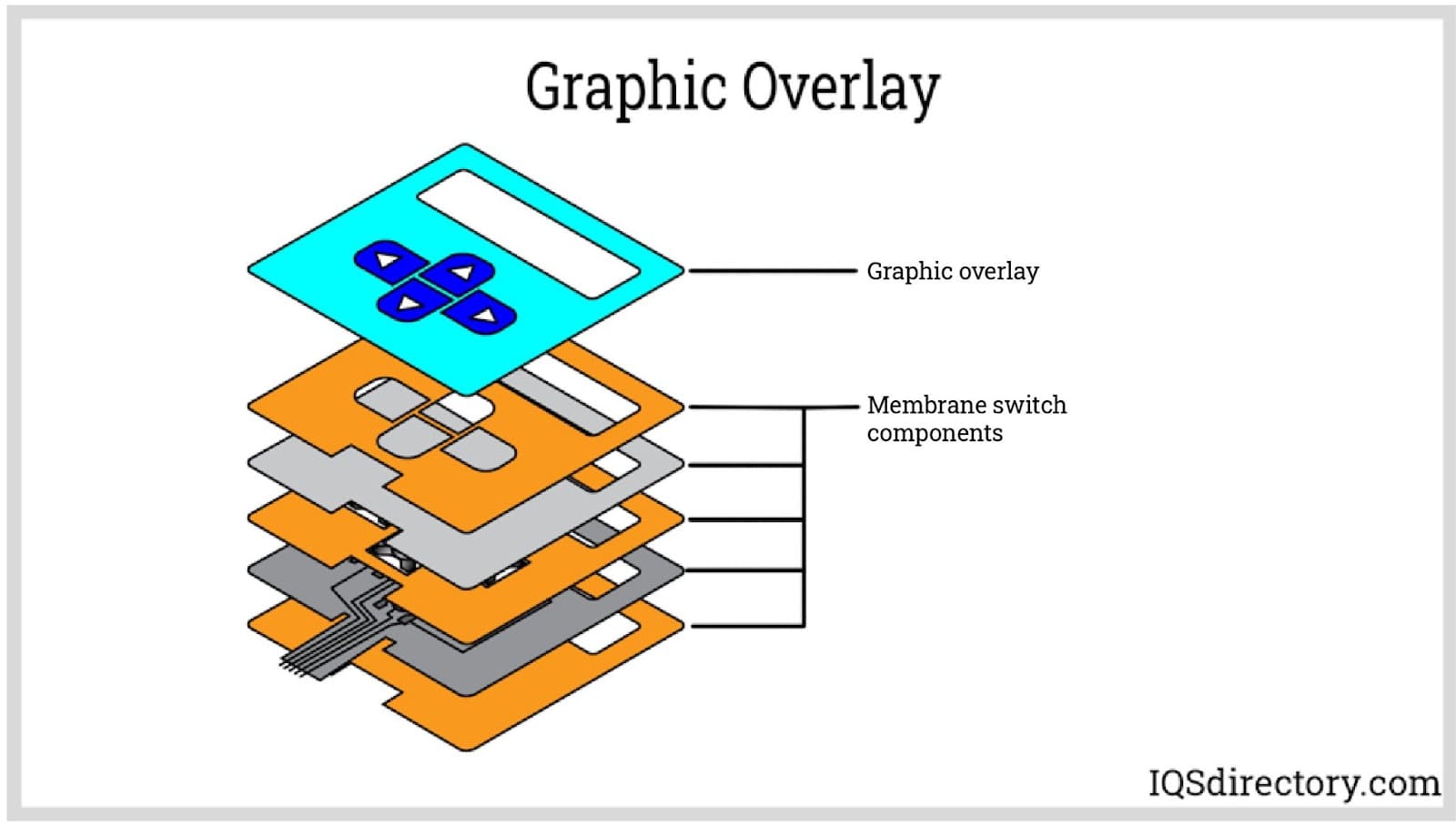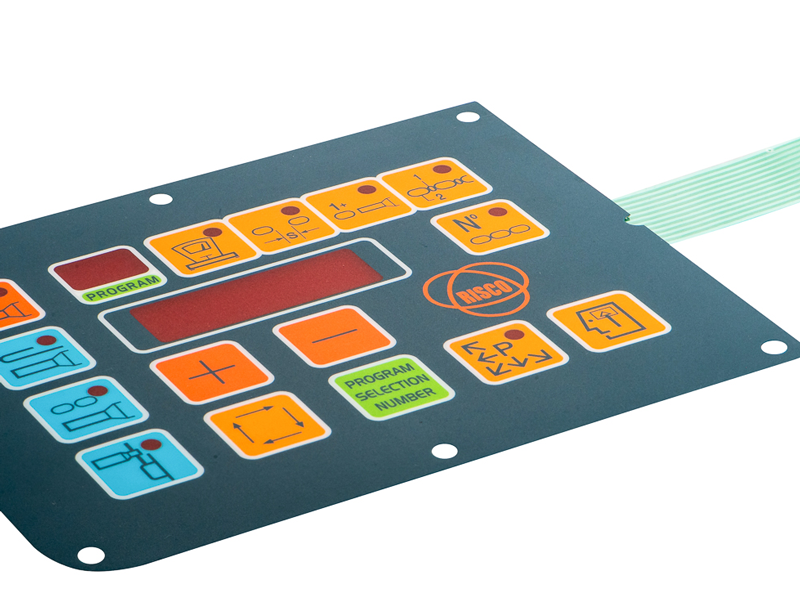Comprehending Membrane Layer Switches: The Key to Long Lasting and Reliable Controls
Membrane layer switches represent an important element of contemporary user interface style, mixing performance with resilience in various applications. As we explore the complexities of membrane layer buttons, it ends up being clear that their role in improving control systems is both profound and intricate, elevating inquiries concerning how finest to take advantage of their capabilities in future technologies.
What Are Membrane Buttons?
Membrane layer switches are a sophisticated remedy in the world of interface innovation, integrating performance and design perfectly. These gadgets serve as an interface between customers and digital systems, incorporating a number of parts into a small style. Normally built from flexible, thin layers of materials, membrane switches are designed to reply to touch, making it possible for customers to interact with machinery and digital devices successfully.
The primary aspects of a membrane layer switch consist of a printed circuit layer, graphic overlay, and a spacer layer that avoids unexpected activation. The graphic overlay can be tailored to mirror brand name identity or individual choices, boosting aesthetics while ensuring use. Membrane layer buttons are typically used in various applications, including clinical devices, consumer electronics, and commercial equipment, owing to their durability and resistance to ecological elements such as moisture and dust.
Among the crucial advantages of membrane layer switches is their capacity to stand up to wear and tear, making them optimal for high-traffic environments. In addition, they are lightweight and require very little area, permitting cutting-edge designs in product growth. Overall, membrane switches over represent a sensible and effective choice for modern electronic interfaces, marrying technology with user-centric style principles.

Just How Membrane Layer Switches Over Work
The procedure of membrane switches over hinges on an easy yet efficient device that translates customer input right into digital signals. When a customer presses the button, the top layer flaws, permitting a conductive element in the circuit layer to make contact with a corresponding conductive pad on the bottom of the graphic overlay.
The style of membrane layer buttons can vary, but they commonly include domes or tactile aspects to supply comments to the customer, enhancing the overall experience. The materials used in membrane layer buttons, such as polyester or polycarbonate, add to their longevity and resistance to ecological variables, consisting of wetness and dirt. The published circuits are generally encapsulated, which safeguards them from wear and tear over time.

Benefits of Membrane Layer Switches
Among the primary advantages of membrane layer switches is their versatility in style, permitting them to be tailored to fulfill particular customer demands and aesthetic demands. This adaptability encompasses different markets, where various forms, sizes, and shades can be employed to enhance individual interaction and visual appeal.
In addition, membrane layer switches are known for their resilience. Built from durable materials, they are immune to dirt, dampness, and physical wear, which significantly prolongs their lifespan compared to conventional mechanical switches. This longevity makes them specifically suitable for go to this web-site high-traffic environments and applications requiring long life.

In addition, membrane switches offer a structured profile, leading to a thinner style that can be integrated right into various tools without including mass. This feature not just boosts the visual appeal however likewise contributes to a much more ergonomic item design.

Applications of Membrane Layer Switches
Easy to use and flexible, membrane layer buttons locate applications throughout a vast array of markets, consisting of medical devices, consumer electronics, and commercial devices. In the clinical field, these buttons are integral to devices such as analysis tools, person monitoring systems, and infusion pumps, where integrity and simplicity of cleansing are crucial. Their capacity to preserve and hold up against rough settings functionality makes them perfect for such applications.
In customer electronic devices, membrane buttons are utilized in items like microwaves, washing devices, and remote controls - membrane switch. Their streamlined design permits intuitive individual interfaces, improving the overall user experience while providing toughness and resistance to deterioration
Commercial equipment likewise gains from membrane switches, specifically in control panels for equipment and automation systems. These switches offer defense against dust look at this now and wetness, making sure constant efficiency in tough settings. Their adjustable functions permit makers to tailor them to certain operational requirements, improving efficiency and functionality.
Picking the Right Membrane Change
When picking a membrane layer switch, it is important to consider numerous elements that affect efficiency and viability for details applications. The key factors to consider consist of environmental conditions, tactile comments, resilience, and layout requirements.
First, analyze the operating setting; switches revealed to moisture, chemicals, or severe temperature levels require details materials to guarantee long life and performance. Next off, review the requirement for responsive feedback. Depending on user interaction, some applications might gain from a tactile action to verify activation, while others might choose a non-tactile layout for visual reasons.
Longevity is another important variable; membrane buttons must be created to endure constant use, impacts, and abrasion. Make sure the chosen button can endure the anticipated lifecycle, particularly in high-usage circumstances.
Conclusion
Finally, membrane layer switches over offer as necessary parts in the style of reliable and long lasting control systems across numerous industries. Their compact style, combined with robust construction and customizable features, improves customer communication while making sure durability popular atmospheres. The adaptability of membrane layer switches enables tailored options that meet specific functional demands, reinforcing their significance in modern technology. membrane switch. read As sectors remain to develop, the value of incorporating effective membrane switch options can not be overemphasized.
Membrane switches represent a crucial aspect of modern-day user interface design, blending capability with strength in numerous applications.Membrane layer switches are an advanced remedy in the realm of individual interface technology, integrating performance and layout seamlessly. Usually constructed from versatile, slim layers of products, membrane layer switches are made to react to touch, enabling individuals to engage with machinery and digital gadgets successfully.
The layout of membrane buttons can differ, however they typically include domes or tactile elements to provide comments to the user, improving the total experience.In verdict, membrane layer changes offer as important parts in the style of reliable and durable control systems throughout different industries.